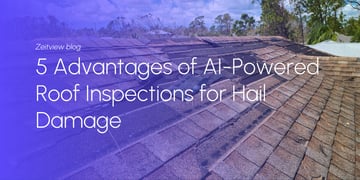Rebuilding in the wake of Hurricane Harvey’s unprecedented damage is work that will take significant time and effort from a variety of industries. During this new period of post-storm recuperation (and preparation for the looming Hurricane Irma), we’ve been able to to clearly see the benefit drones can provide during extreme weather conditions, and the relief efforts that follow.
With a drone network spanning all 50 states, we have many DroneBase Pilots living in areas affected by Hurricane Harvey and the imminent arrival of Hurricane Irma. The DroneBase team has been blown away by the tremendous outreach from our pilot network and their willingness to fly for recovery and damage inspection efforts.
We spoke to two DroneBase Pilots, Mike Hendricks and PJ Cook, about the value of drones for weather-related drone inspections, how they’re preparing for Hurricane Irma, and more.
How do you see drones changing the landscape of disaster relief and recovery efforts?
Mike Hendricks: From what I've learned from my counterparts on the ground in Harvey's wake, it is extremely beneficial for drones to be able to access areas that are otherwise impassable. Drones have been able to assist with locating stranded survivors, delivering supplies, and even finding lost pets.
More than anything, I feel that drones are helping to tell a story that would otherwise go unseen. We drone pilots can help bring the view from above where no other camera can go.
How are you now preparing for Hurricane Irma?
PJ Cook: Personally, I’m doing some Pre-Irma work documenting some major construction projects to record their preparedness and safety concerns addressed. Most interesting one is a major addition for an area hospital. I will be flying Friday to document all the prep work such as: securing items, crane preparation, scaffolding removal and such. Both for liability of the construction companies and most importantly for patient, families, and healthcare worker safety.
Mike Hendricks: We're expecting some serious damage, particularly in south Florida. Drones are going to be needed to assist with SAR operations, electric utility inspections to expedite the restoration of lost power, and insurance adjusting to help speed up claims.
Cook also mentioned that it’s important for drone pilots to have fully charged batteries for your drone at the ready, especially if electricity is lost: “All my drone batteries are charged to assist in any efforts I am asked to do and to survey area for road accessibility and hazards.”
While the recent weather has been tragic, the drone industry is able to find solace in knowing that this is an opportunity to highlight how beneficial drone aerial inspection technology can be. As Hendricks stated, “I feel that this is a time to show the positive side of this nascent industry. This new technology can do great things to help storm victims recover in ways that haven't been done before. We can use our skills and equipment to save lives and tell a story that needs to be told.”
We couldn’t agree more.
Interested in becoming a DroneBase Pilot? Head over to www.dronebase.com/pilots to learn more.



.png?width=360&name=Banner%20Templates%20(4).png)

